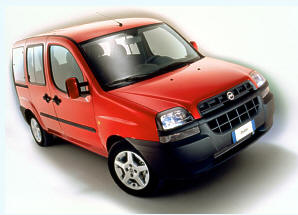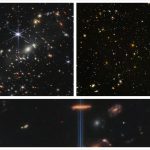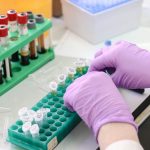The Micro-Vett Doblo Electric Vehicle looks reasonably decent and, wonder of wonders, comes with a fairly decent set of specifications too. It seats five including the driver, has a top speed of 120 km/h and a range of around 150 km in the city. The standard batteries charge up in 5 to 8 hours depending on the charger used. OK, so it’s not a perfect all-round vehicle, but we’re getting there. Slowly. Here’s a video showing a super fast 10 minute recharge cycle for a test vehicle with Altairnano batteries.
DOBLO’: most appreciated MPV all over Europe, now available in most evolute electric traction version: Lithium-ion batteries guarantees low weight and high performances: 120 km/h speed, 150 kms range in city, unaltered payload capacity. All original qualities of Doblò are saved to allow all use without pollution and with incredibly low acoustic emissions: Doblò Electric is available in all the variants of traditional 2-5 seats diesel vehicle.





Water-fuel car unveiled in Japan
Jun. 13 – Japanese company Genepax presents its eco-friendly car that runs on nothing but water.
The car has an energy generator that extracts hydrogen from water that is poured into the car’s tank. The generator then releases electrons that produce electric power to run the car. Genepax, the company that invented the technology, aims to collaborate with Japanese manufacturers to mass produce it.
SOUNDBITE: Kiyoshi Hirasawa, CEO, Genepax.
Michelle Carlile-Alkhouri reports.
Source: http://www.reuters.com/news/video?videoId=84561
It’s great to see more companies working on cars like this, as electrics and plug in hybrids are the future. I think getting 60 or so miles per day as this car promises would be great.
While this company may be totally legitimate, the website is pretty sad. Very little info, and it looks quite dated. Message to this company, and just about any company for that matter. Having a poor website is synonymous with having a brick and mortar with peeling paint and a sign that’s falling down. Spend a bit of money on your site! Lots of pictures and content don’t hurt either.
Oh, and I do dig the ferret blog.
Thanks Joe :-) We do try and keep our paint fresh and our mortar sparkly here at the Ferret. :-)
New Fuel Cell System ‘Generates Electricity with Only Water, Air’
Jun 13, 2008 19:30
Kouji Kariatsumari, Nikkei Electronics
Genepax Co Ltd explained the technologies used in its new fuel cell system “Water Energy System (WES),” which uses water as a fuel and does not emit CO2.
The system can generate power just by supplying water and air to the fuel and air electrodes, respectively, the company said at the press conference, which took place June 12, 2008, at the Osaka Assembly Hall.
The basic power generation mechanism of the new system is similar to that of a normal fuel cell, which uses hydrogen as a fuel. According to Genepax, the main feature of the new system is that it uses the company’s membrane electrode assembly (MEA), which contains a material capable of breaking down water into hydrogen and oxygen through a chemical reaction.
Though the company did not reveal the details, it “succeeded in adopting a well-known process to produce hydrogen from water to the MEA,” said Hirasawa Kiyoshi, the company’s president. This process is allegedly similar to the mechanism that produces hydrogen by a reaction of metal hydride and water. But compared with the existing method, the new process is expected to produce hydrogen from water for longer time, the company said.
With the new process, the cell needs only water and air, eliminating the need for a hydrogen reformer and high-pressure hydrogen tank. Moreover, the MEA requires no special catalysts, and the required amount of rare metals such as platinum is almost the same as that of existing systems, Genepax said.
Unlike the direct methanol fuel cell (DMFC), which uses methanol as a fuel, the new system does not emit CO2. In addition, it is expected to have a longer life because catalyst degradation (poisoning) caused by CO does not occur on the fuel electrode side. As it has only been slightly more than a year since the company completed the prototype, it plans to collect more data on the product life.
At the conference, Genepax unveiled a fuel cell stack with a rated output of 120W and a fuel cell system with a rated output of 300W. In the demonstration, the 120W fuel cell stack was first supplied with water by using a dry-cell battery operated pump. After power was generated, it was operated as a passive system with the pump turned off.
This time, the voltage of the fuel cell stack was 25-30V. Because the stack is composed of 40 cells connected in series, it is expected that the output per cell is 3W or higher, the voltage is about 0.5-0.7V, and the current is about 6-7A. The power density is likely to be not less than 30mW/cm2 because the reaction area of the cell is 10 x 10 cm.
Meanwhile, the 300W fuel cell system is an active system, which supplies water and air with a pump. In the demonstration, Genepax powered the TV and the lighting equipment with a lead-acid battery charged by using the system. In addition, the 300W system was mounted in the luggage room of a compact electric vehicle “Reva” manufactured by Takeoka Mini Car Products Co Ltd, and the vehicle was actually driven by the system.
Genepax initially planned to develop a 500W system, but failed to procure the materials for MEA in time and ended up in making a 300W system.
For the future, the company intends to provide 1kw-class generation systems for use in electric vehicles and houses. Instead of driving electric vehicles with this system alone, the company expects to use it as a generator to charge the secondary battery used in electric vehicles.
Although the production cost is currently about ¥2,000,000 (US$18,522), it can be reduced to ¥500,000 or lower if Genepax succeeds in mass production. The company believes that its fuel cell system can compete with residential solar cell systems if the cost can be reduced to this level.
Source: http://techon.nikkeibp.co.jp/english/NEWS_EN/20080613/153276/
Genepax President Interviewed on ‘Water Energy System’
Jun 16, 2008 19:38
Kouji Kariatsumari, Nikkei Electronics
Genepax’s new fuel cell system
Kiyoshi Hirasawa, president of Genepax Co Ltd, unveiled part of the reaction mechanism of the company’s new fuel cell system called “Water Energy System” in an interview with Nikkei Electronics.
The system, which is capable of generating power with water and air, was first presented June 12, 2008. As reported in our previous article, the system produces hydrogen through a chemical reaction between water and a metal (or a metal compound) on the fuel electrode side (See related article).
Genepax uses a metal or a metal compound that can cause an oxidation reaction with water at room temperature, the company said. Metals that react with water include lithium, sodium, magnesium, potassium and calcium. The main feature of the Water Energy System is that it can be operated for a longer period of time by controlling the reaction of the metal or the metal compound, the company said.
According to Genepax, the metal or the metal compound is supported by a porous body such as zeolite inside the fuel electrode of the membrane electrode assembly (MEA). The products of the hydrogen generation reaction dissolves in water, and the water containing them will be discharged with water inside the system. Upon the completion of the reaction, the generation of hydrogen and power stops.
Considering the commercialization of the system, Genepax is conducting evaluation tests and plans to release test data.
Source: http://techon.nikkeibp.co.jp/english/NEWS_EN/20080613/153276/